
The second edition of School Leadership Summit (SLS) 2015 at Le Meridien, New Delhi was witness to an auspicious gathering of the most influential school education leaders. The event was attended by Principals and Academicians from top 150 schools from across the country, who discussed and shared ideas on role of digitization in school education. The event began with interactive knowledge sharing session culminated into a grand felicitation ceremony of top schools of India ranked in December edition of Digital Learning
 Archana Jain Principal, Delhi Public School, Panipat City
Archana Jain Principal, Delhi Public School, Panipat City
The students, nowa- days are experiencing the innovative usage of technology in education and are frequently interacting with innovative trends of technologies like, cloud and mobile to get their learning purpose being served. The delivery models of imparting education to students have also transformed with a change in preferences of a student’s learning method. Earlier, we used to take notes in classrooms but with a change in technologies offered, they are now available on internet. Teachers are sharing them with the students. Education, along with general communication has too shifted to digital boards for delivery purposes. The digitally enabled learning boards leave a very good visual impact on a learner’s mind and an imprinted impression on a person’s mind. However, sometimes a teacher finds it difficult to adapt to tech-savvy students. Mobiles have become a very popular source of learning as e-books can be downloaded on them very easily.
Ratna Dhar Principal, Millennium School, Karnal
Millennium School use technology extensively for standardised teaching to the children and believes in teaching through concept, not content. Such a specified environment enables children to learn and deliver on their own learning pace. In our technology enabled environment at Millennium School, we even retain poor performing students’ post school hours within premises, and help them in improving their skills with the help of technology-enabled solutions. We carry out these development activities after the formative assessment of a student with the help of our evaluation modules. Under the student assessment system, we resolve a child’s caliber and his grade. If the child lies under the challenged group, we offer him summative assessment text to carry out the test according to his nature and caliber. However, there are farthest places where technology is not readily accessible and approachable.
 Abhilasha Singh, Principal, Sonipat School
Abhilasha Singh, Principal, Sonipat School
Our school primarily operates in rural areas where agriculture is a primary mode of occupation and entire economy thrives on agriculture and agro-based products. Therefore, we have kept the fee structure comparatively low in these areas. However, even with respect to the regular use of technology in these areas, we are lagging 10 to 15 years behind. It makes it difficult for teachers to deliver education, when children are already well-versed with technologies like internet and mobile. This is enabling children to get everything on a swipe of finger on a smartphone and have made them intuitive enough to prompt decision about what they wish to learn, and when and how to learn. This is causing teachers to put more efforts to catch students with respect to the usage of technology.
Naresh Duble DGM- FMD & Training ABP, ArmStrong
Some recent surveys conducted for assessing top level universities, globally, could not find any of the Indian universities in top 300. India is known worldwide for producing the good number of doctors and engineers. However, with respect to scientific research its position is competitively low. One of the reasons for inferior level of research capabilities in India is lack of suitable environment inculcating different learning and thinking. School building acoustically designed helps students forming an environment in classroom to improve concentration levels. An apt sound meter measuring the right type of DB level in the classroom has generally reported teachers ending up producing noise in a classroom instead of communication. The building solutions offered by ArmStrong, thus make school buildings acoustically refined and forms a level of engagement between a learner and a teacher.
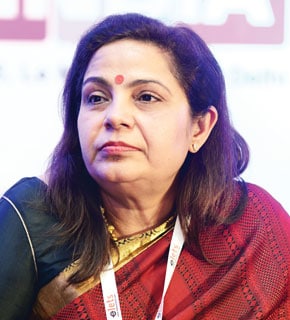 Neeru Madhuri Parti, Head Academics, Shree Ram Global School, Gurgaon
Neeru Madhuri Parti, Head Academics, Shree Ram Global School, Gurgaon
In present times, a school is not just a means to social objective delivery for imparting learning, but has become a project enterprise ranging between 50 crores to 100 crores. With such a huge cost involved in building a school, the school promoters and CEOs spend sleepless nights in a worry to get return on the huge investment they have made. Despite so much pressure on the schools for managing finances, they are still inherent to their primary objective and passionate about providing quality education. To raise the level of education, initiatives like training for becoming a principal or principal training is of the utmost importance. For example, in the US, a huge amount of money is being spent on training of principals. In addition, the unnecessary pressure from private schools should be lifted as they, along with imparting quality education pays valuable tax.
Rustom Kerawalla, Chairman, Vibgyor High, Mumbai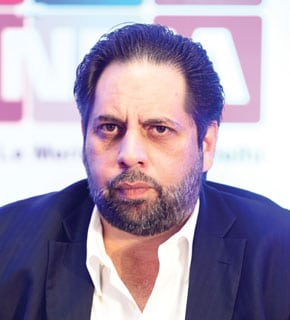
Running a school administration has become an uphill task in present times. It has become more of a fight with the establishment for issues like fee regulation, taxes, etc. A school owner will spend sleepless nights till the adequate number of students takes admission in his school. Further to focusing on academics, school principals should also concentrate on developing themselves as CEOs and be involved in stages of cost operations, HR functions, maintenance related issues. Earlier, the school trustees used to participate intensively in school administration and accounts, and the principals were restricted only to academics. Now-a-days, things have changed to a greater extent and it has become imperative for principals to focus on areas of cost as well.
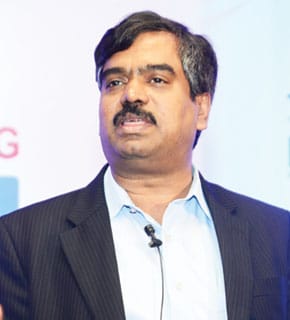 Manikandan R, Director –Business Development, Printing & Personal Systems, HP, India
Manikandan R, Director –Business Development, Printing & Personal Systems, HP, India
It is with the emerging effect of technology that the world is changing very fast. Things and processes have not remained restricted only to a single place of origin, they have become global. Similarly, students now belong no more to a single place or district, they are global students. The students need to be innovative, collaborated, and should have the critical thinking skills. 70 percent of the jobs that students will be doing tomorrow do not exist today. Therefore, students have to have these three skills to be able to adapt to the changing environment. Flipped classroom is not far from reality, it’s all happening in India.
Since the dawn of human history, education has continued to evolve, diversify and extend its reach and coverage. The traditional classroom teaching methods are no longer effective to achieve current learning standards; therefore, tech-enabled strategies of learning are being used to engage the tech-savvy future generation.
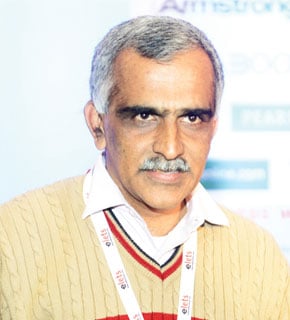 Lt. Col. (Retd.) Atul Sekhar, Principal, Atul Vidalaya
Lt. Col. (Retd.) Atul Sekhar, Principal, Atul Vidalaya
To make the learning experience more exciting, multimedia technologies like video and audio teaching aids, TV, video conferencing, LCD projectors, online group discussions and peer group tutoring, etc., are being incorporated by many education institutes. Similarly, a mix of technology and traditional face-to-face instruction known as blended learning is a great approach, where students find themselves engaging in vibrant online debates, discussions, writing assignments and collaborative group work. A viable and effective approach to deliver high-quality, up-to-date, on-demand education has been possible with mobile devices, cloud applications and other online educational content. We need to think how schools and colleges can build their own wireless infrastructures to support new emerging trends, including a social network where students can communicate and hold class discussions.
Aditi Avasthi Founder, CEO, Embibe
Sometime ago, a point was raised whether there should be government funding in five year plans. In a recent datadriven study between private and public schools, it was found that affordable private sector schools were far more prompt and immersive in teaching than the public schools. It was also seen that private schools are better governed and have higher quality pedagogy.
 Shreevats Jaipuria, Vice Chairman, Jaipuria Group of Schools
Shreevats Jaipuria, Vice Chairman, Jaipuria Group of Schools
If we look from the demographic or market perspective, really the ‘acchee din’ has arrived for the Indian private schools as the economy is developing towards the path of growth. Market is developing, and every person due to better educational facilities plans to send his/her kids to private schools. But, if we look around from the perspective of regulatory system and provisions in India, it is just opposite and we all are facing it. The regulation in India is not conducive to the growth of private schools, whether it is a 25 percent RTE or some other sort of regulation. It increases the cost to a greater extent of operating and running the schools and the brunt comes back to schools. Over and over regulation is just hampering the growth of private schools in India.
Vinesh Menon, Chief Operating Officer, Global Discovery Academy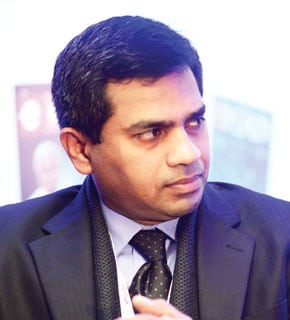
We are still on the way to keep a balance between being financially viable and delivering quality education. For the past three years, we are running an institution as an education service provider, and are trying to bring paradigm shift the way pedagogy is delivered. We have tied up with school promoters who have become our business partners. With this type of business model, it takes too much effort to maintain balance between business objectives and take care of children without compromising on delivery of education and learning. We are doing it in a professional manner as we are running our activities and operations backed by the Industry professionals. We are bringing out the processes that are quite savvy and simplified. At the same time, we are trying to adapt to IT regulations of the government.
Lisa Jain, Country Representative – India, The College Board
SAT is an exam conducted by The College Board that is carried to help students to approve eligibility for appearing entrance exams for the colleges across the globe. It has been observed that students in India have developed an inclination towards under graduate courses overseas as in the US, UK, Australia, Singapore and other countries. First of all, there is a set of students, who, after being not selected in top level technical courses in India as IITs and others opt for the scholarships in foreign universities for their preferred choices. Apart from that, at foreign colleges, the students sometimes aspire for course combinations that are not available in India like business with music, etc. This all leads to the need of customized course as SAT for the students willing to learn at foreign universities.
 Dr Niyati Chitkara, Principal, Chitkara International School, Chandigarh
Dr Niyati Chitkara, Principal, Chitkara International School, Chandigarh
With an interactive randomly raised question and answer sessions, Dr Niyati Chitkari emphasized on the need of students to be at the center of our all educational activities and modifications to courseware and to any technical introduction to courseware. Even to the contested objection to her suggestions, she even termed PTM (Parent Teacher Meeting) as a verdict to students’ instead of consulted counseling to them.
Satya Narayanan, Chairman and Founder, Indus World School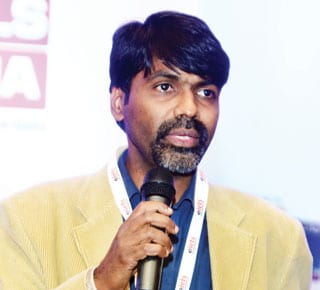
There is such a knowledge explosion that there is hardly any scope to determine between what is relevant and what is inculcated for development and growth processes. And it is further added with obsoleteness of every emerging technology in a shorter span of time that every course, every skill, every syllabus becomes older in no time. It is time to develop skill of re-skilling. However, this skill of relearning should be added with appropriate filtration of volumes of knowledge scattered across, now on, more readily available mediums and platforms. The school or college curriculum should only have highly selected educational matter in randomly changing technological environment to the benefit of students
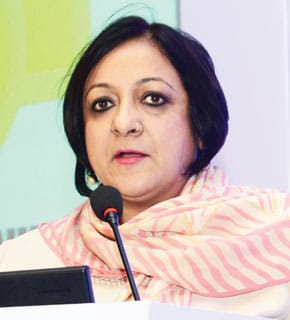 Poonam Singh Jhamwal, CMO, Extramarks Education Pvt Ltd.
Poonam Singh Jhamwal, CMO, Extramarks Education Pvt Ltd.
As school leaders, we expect teachers to be effective, students to be successful and parents to be involved in learning initiatives. In Digital learning, our aim is to take teaching at the level of personalised learning, the empowered, and supported and finally let a student grow in his own personal development and emerge as an individual. In these circumstances technology acts as an enabler, facilitator and moulds a student to the grooming as well as educational needs of the modern times, however, with a human touch. It doesn’t mean the role of school teachers gets limited here. They have to play a more important role of cheerleader and an inspirational leader for students amidst the environment of digital learning. Distribution of leadership is another aspect that a school owner should foster for a successful teaching delivery. Finally, the teachers should be effective, students successful and students involved.




















